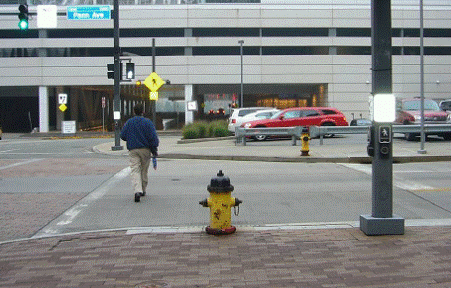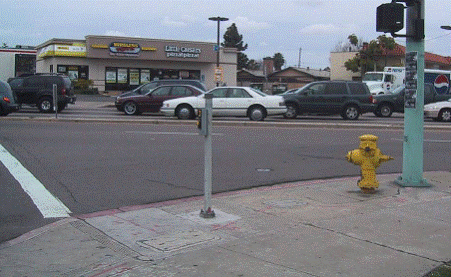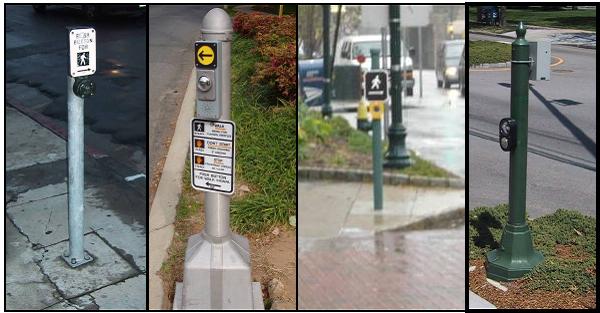Issue 13: Stub poles
Figure 15: APS is located on mast arm pole more than 10 feet outside the crosswalk lines. In addition, a fire hydrant is between the crosswalk location (and the curb ramp) and the APS.
Figure 16: Stub pole was installed to locate APS near the crosswalk.
By installing APS on existing poles without careful evaluation of usability and function, jurisdictions may be obviating the benefits such devices provide. In the location shown in Figure 15 (a pre-timed intersection), the APS was installed on the available mast arm pole, resulting in an installation in which the APS volume had to be set to be quite loud in order to be heard at the crosswalk and where using the tactile arrow and vibrotactile WALK indication could result in a hazardous crossing.
In addition, the street names are similar -- Penn and Tenth -- and it is quite difficult to discern which is being announced in the speech WALK message, particularly at the crosswalk for crossing Tenth (the street to the left in Figure 15), where the APS is too far from the street.
Remedy: In a similar location, shown in Figure 16, a stub pole was installed within five feet of the crosswalk in order to place the APS in a usable location. A signal pull box was already in the sidewalk area near the new stub pole location, so concrete work was minimized. Stub poles are commonly used in some jurisdictions.
Requirements for wiring and for mounting poles vary in different areas of the country. Flexibility in requirements may make it easier to install usable facilities for pedestrians.
Some examples of stub pole installations across the US:
Figure 17: Examples of stub poles – different materials and installation.




User Comments/Questions
Add Comment/Question